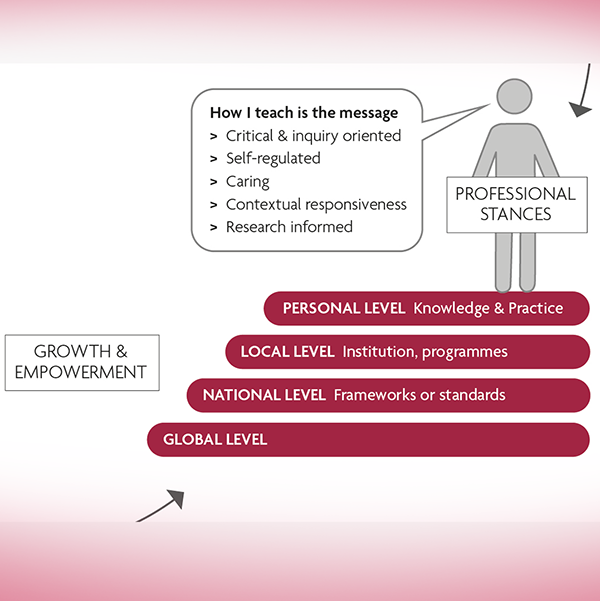Voices of Teacher Educators: Preparing the Next Generation of Teacher Educators

The team member role and ways of becoming ‘in-service’
December 7, 2019
Teacher educators as committed professionals
March 5, 2020Voices of Teacher Educators: Preparing the Next Generation of Teacher Educators


As the landscape of teacher education continues to shift towards emphasizing program coherence and highly integrated clinical practice, so too does the work of teacher educators working in higher education. The emphasis on linking to the clinical context requires collaboration between school and university-based teacher educators’ to systematically and intentionally link theory, research, and practice to support teacher candidate learning. This preparation requires creating third spaces (Beck, 2018) that create “mutually beneficial partnerships between educator preparation providers [universities] and PK-12 [schools] that can successfully create laboratories of practice for both teacher candidates and practicing teachers, providing continuous improvement for all involved” (AACTE, p. 2). The overarching belief is that clinical practice and partnership are essential to high-quality teacher preparation.
When one searches the literature on teacher education, there is an abundance of research focused on teacher candidate preparation and the importance of that preparation on P-12 student learning. Additionally, there is a great deal of attention paid to research focused on the professional learning of practicing teachers across their career span and the critical role their on-going learning plays on student learning. That said, much less attention is given to the learning and development of those who prepare teacher candidates and support the professional learning of practicing teachers, the teacher educator. Zeichner (2005) noted, “Many universities today treat teacher education as a self-evident activity both for school- and university-based teacher educators who mentor prospective teachers in clinical experiences and for the instructors and faculty who teach courses in a teacher education program” (p.118). Although pockets of excellence of clinically intensive preparation programs exist around the world, today we continue to witness teacher preparation programs that vary substantially in the degree of program coherence and their commitment to teacher candidate learning within the context of practice. This begs the question, to what extent have we intentionally prepared the next generation of teacher educators to develop programs with strong and tightly coupled clinical practice and partnership?
In an effort to respond to this critique, we brought together a group of teacher educators who focus on bridging to clinical work and have a great deal of experiences working in third spaces with school-based teacher educators. Together their voices share the collective wisdom of their experiences related to Preparing the Next Generation of Teacher Educators. Included is scholarship focused on the preparation of university-based teacher educators, the preparation of school-based teacher educators, and how current and future teacher educators are learning in and from their work as teacher educators. In combination, the chapters within this book shed light on how teacher educators continue to learn as well as strengthen future generations of teacher educator practice. We believe the collection will be helpful in generating conversation related to designing teacher education, supporting university and school-based educator preparation in teacher education, assessing the needs of and challenges faced by university and school-based teacher educators, and providing support to those who engage in this work.
References
American Association of Colleges for Teacher Education. (2018). A pivot toward clinical practice, it’s lexicon, and the renewal of educator preparation: A report of the AACTE Clinical Practice Commission. Washington D.C.: Author.Beck, J. S. (2018). Investigating the third space: A new agenda for teacher education research. Journal of Teacher Education, https://doi.org/10.1177/0022487118787497
Yendol-Hoppey, D., Hoppey, D., & Dana, N.F. (Eds.) (2019). Preparing the next generation of teacher educators for clinical practice. Charlotte, NC: Information Age.
Zeichner, K. (2005). Becoming a teacher educator: A personal perspective. Teaching and Teacher Education, 21(2), 117-124.




